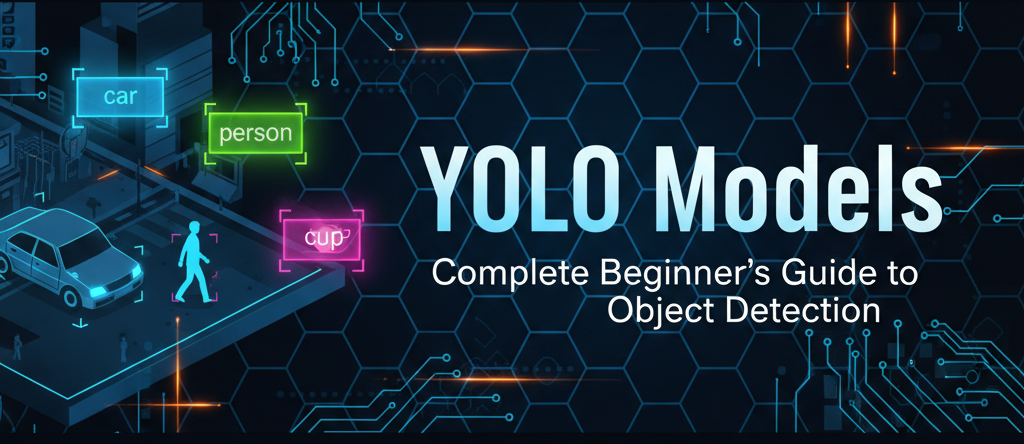🎯 What is YOLO? The Magic of Seeing Everything at Once
Imagine you're looking at a busy street photo and can instantly spot all the cars, people, dogs, and traffic signs - all at the same time, in just one quick glance. That's exactly what YOLO does, but for computers!
YOLO stands for "You Only Look Once" - and it's like giving a computer super-vision powers. Instead of scanning an image piece by piece (which takes forever), YOLO looks at the entire image just once and identifies everything it sees instantly. Think of it as the difference between reading a book word by word versus understanding the whole page at a glance!
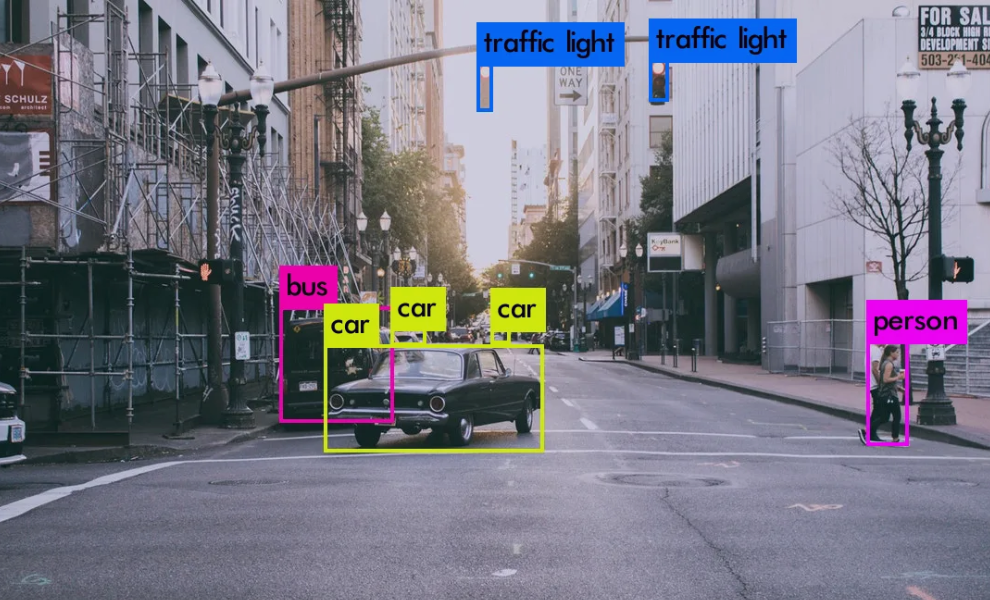
🤖 What Does YOLO Actually Do?
YOLO is like having a super-smart friend who can: • See and Name: Look at any image and tell you what's in it • Find Location: Point out exactly where each object is located • Work Super Fast: Do all this in real-time (faster than you can blink!) • Handle Multiple Objects: Spot dozens of different things simultaneously • Be Confident: Tell you how sure it is about each detection
Real-World Magic Examples: • Self-Driving Cars: "I see a pedestrian at 2 o'clock, a car approaching from the left, and a stop sign ahead" • Security Cameras: "Motion detected - it's a person, not a cat or shadow" • Sports Analysis: "Player #10 just kicked the ball towards the goal" • Medical Imaging: "There's an unusual spot in this X-ray that needs attention" • Wildlife Monitoring: "Three elephants and two zebras detected near the watering hole"
🚀 What Makes YOLO Special? The Speed Revolution
Before YOLO, object detection was like this:
- Old Way: Look at top-left corner → scan right → move down → scan again → repeat 1000+ times
- Time Taken: Several seconds per image (too slow for real-time!)
- Problem: By the time you detect a car, it has already moved!
YOLO's Revolutionary Approach:
- New Way: Look at entire image once → detect everything simultaneously
- Time Taken: Milliseconds per image (super fast!)
- Result: Perfect for real-time applications like video streaming
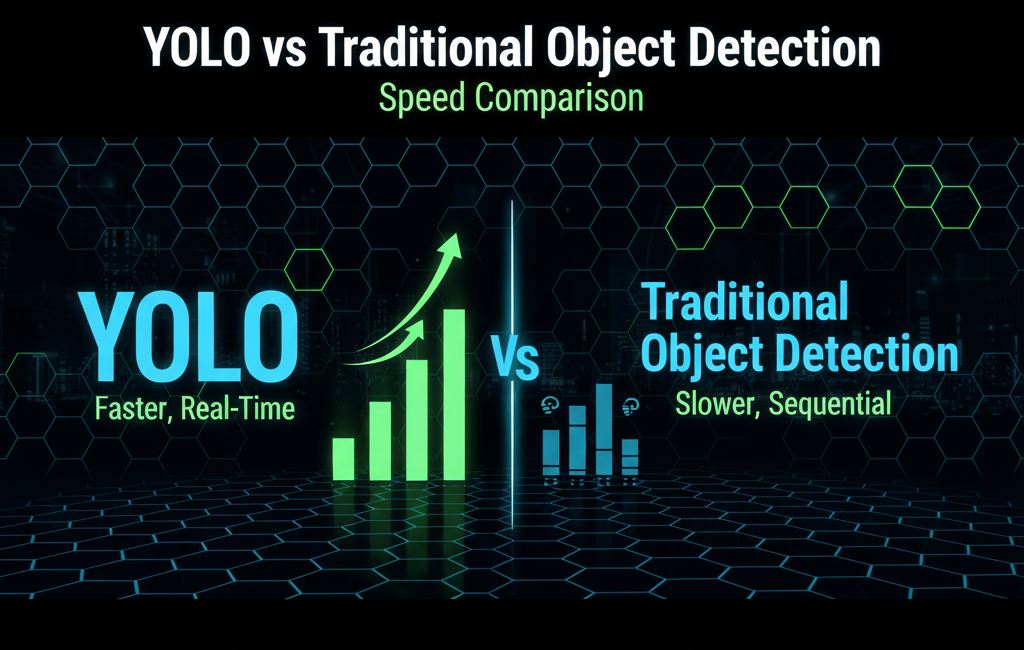
🏢 What is Ultralytics? The YOLO Supermarket
Think of Ultralytics as the "Apple Store" of YOLO models - they make everything user-friendly and accessible!
Ultralytics is: • The Company: Leading AI company that develops and maintains modern YOLO models • The Platform: Easy-to-use tools and software for object detection • The Community: Millions of developers worldwide use their tools • The Innovation Hub: Where the latest YOLO versions (like YOLOv8, YOLOv9, YOLOv10) are born
What Ultralytics Provides: • Pre-trained Models: Like buying a smartphone that already knows how to work • Easy Installation: Just a few commands and you're ready to go • Great Documentation: Step-by-step guides even beginners can follow • Community Support: Thousands of developers helping each other • Regular Updates: Constantly improving and adding new features
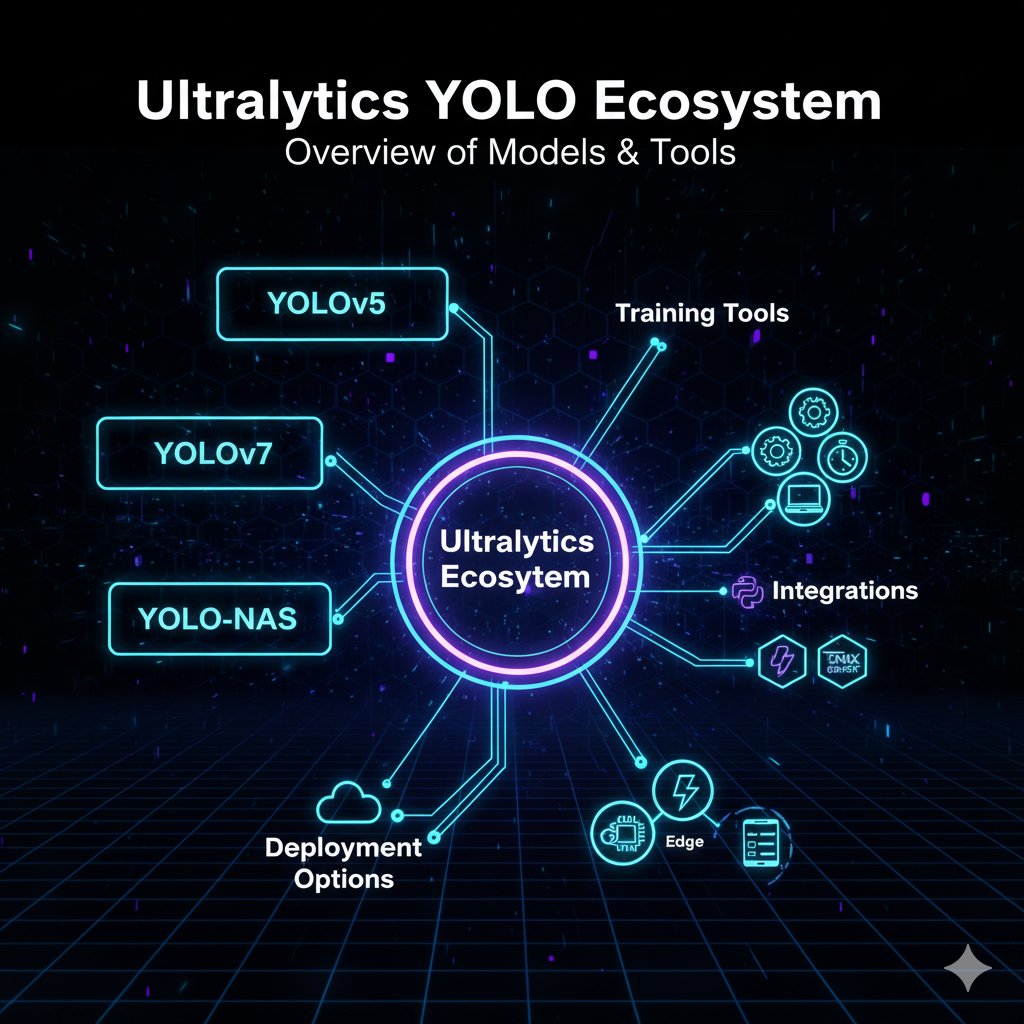
🧠 Deep Learning Architecture: The Brain Behind YOLO
YOLO uses something called Convolutional Neural Networks (CNNs) - think of it as a artificial brain designed specifically for understanding images!
The YOLO Architecture in Simple Terms:
1. Backbone Network (The Eyes) 👁️ • Purpose: Extract important features from the image • Simple Analogy: Like your eyes recognizing shapes, colors, and patterns • Technology: Uses networks like CSPDarknet, EfficientNet, or ResNet • What It Does: Turns a complex image into meaningful data the computer can understand
2. Neck Network (The Connector) 🔗 • Purpose: Combines information from different parts of the image • Simple Analogy: Like your brain connecting dots - "this wheel belongs to that car" • Technology: Feature Pyramid Networks (FPN) and Path Aggregation Network (PAN) • What It Does: Makes sure small and large objects are detected equally well
3. Head Network (The Decision Maker) 🎯 • Purpose: Makes final decisions about what objects are where • Simple Analogy: Like announcing "I see 3 cars, 2 people, and 1 dog" • Technology: Multiple detection layers for different object sizes • What It Does: Outputs bounding boxes, confidence scores, and class labels

📚 The Amazing History of YOLO: From Idea to Revolution
YOLO's journey is like watching a student become a genius over time!
🌟 YOLOv1 (2015) - The Birth of a Revolution
• Created by: Joseph Redmon and team at University of Washington • Big Idea: "What if we detect all objects in just one pass?" • Revolutionary Concept: First real-time object detection system • Limitation: Could only detect 20 different types of objects • Speed: 45 FPS (frames per second) - incredibly fast for its time!
⚡ YOLOv2 (2016) - Getting Better and Faster
• Improvements: Better accuracy, could detect 9000+ object types • Innovation: Introduced anchor boxes for better object localization • Speed Boost: Up to 67 FPS • Nickname: Also called YOLO9000 due to its ability to detect 9000 object categories
🔥 YOLOv3 (2018) - The Balanced Champion
• Sweet Spot: Perfect balance between speed and accuracy • Architecture: Introduced multi-scale detection • Performance: Could compete with much slower but more accurate models • Legacy: Became the most widely used version for years
🚀 YOLOv4 (2020) - The Community Takes Over
• New Developers: Alexey Bochkovskiy and team (original creator stepped back) • Major Upgrades: Bag of freebies and bag of specials techniques • Performance: Significant improvement in accuracy without losing speed • Impact: Proved YOLO could keep evolving with community support
⚡ YOLOv5 (2020) - Ultralytics Enters the Scene
• Game Changer: Ultralytics made YOLO super easy to use • User-Friendly: Simple pip install and you're ready to go! • PyTorch: Built on modern, popular framework • Community: Explosive growth in users and applications • Controversy: Some debates about versioning, but users loved it!
🎯 YOLOv8 (2023) - The Modern Masterpiece
• Latest and Greatest: Most advanced YOLO version • Versatility: Object detection, instance segmentation, classification, pose estimation • Performance: Best accuracy-speed trade-off yet • Ease of Use: Even more beginner-friendly • Active Development: Constantly improving with regular updates

🛠️ How YOLO Works: The Step-by-Step Magic
Let's understand how YOLO processes an image:
Step 1: Grid Division 📊 • YOLO divides the image into a grid (like a checkerboard) • Each grid cell is responsible for detecting objects in its area • Think of it like assigning security guards to different zones
Step 2: Feature Extraction 🔍 • The backbone network scans the entire image • Extracts important features like edges, shapes, colors, textures • Like a detective gathering clues about what's in the image
Step 3: Prediction Generation 🎯 • Each grid cell predicts multiple bounding boxes • For each box, it predicts: location, size, confidence, and object class • Like each security guard reporting what they see in their zone
Step 4: Non-Maximum Suppression ✨ • Removes duplicate detections (multiple boxes for same object) • Keeps only the best predictions • Like a manager filtering reports to avoid counting the same person twice

🌍 Real-World Applications: YOLO Everywhere!
YOLO is quietly working behind the scenes in countless applications:
🚗 Autonomous Vehicles • Detecting pedestrians, cars, traffic signs, lane markings • Real-time decision making for safe navigation • Companies like Tesla, Waymo use similar technologies
🏥 Healthcare & Medical • Analyzing medical images (X-rays, MRIs, CT scans) • Detecting tumors, fractures, abnormalities • Assisting doctors with faster, more accurate diagnoses
🛡️ Security & Surveillance • Smart CCTV systems detecting intruders • Crowd monitoring and people counting • Automatic license plate recognition
🏭 Industry & Manufacturing • Quality control on production lines • Defect detection in products • Automated sorting and packaging
🌿 Agriculture & Environment • Crop monitoring and disease detection • Wildlife conservation and animal counting • Precision farming and resource optimization
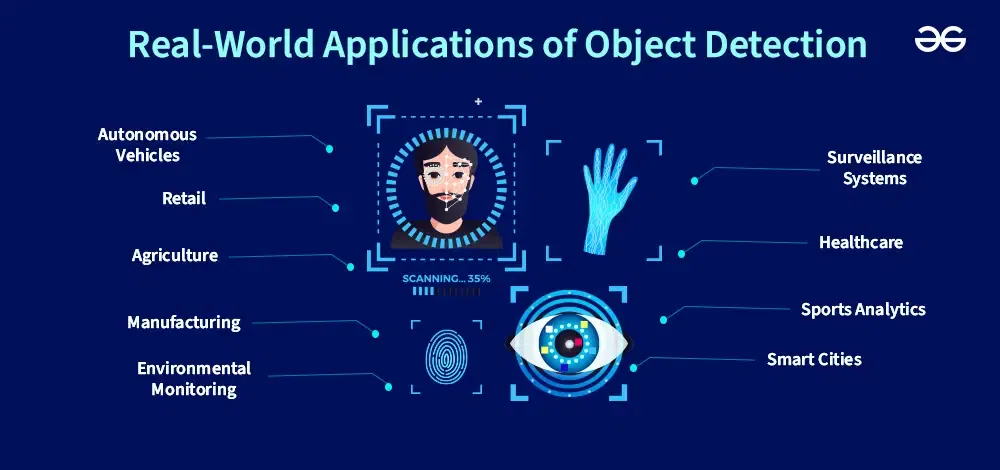
🎓 Why YOLO Matters: The Impact on Our World
YOLO isn't just a cool technology - it's changing how we live:
🚦 Making Transportation Safer • Self-driving cars that can see and react instantly • Traffic monitoring systems that prevent accidents • Smart traffic lights that adapt to real conditions
🏥 Revolutionizing Healthcare • Faster medical diagnoses saving lives • Early detection of diseases • Assisting doctors in remote areas with limited expertise
🛡️ Enhancing Security • Smarter security systems that reduce false alarms • Public safety through intelligent surveillance • Protecting private property more effectively
🌱 Environmental Protection • Monitoring endangered species • Detecting illegal activities in protected areas • Optimizing resource usage in agriculture
🔮 The Future of YOLO: What's Coming Next?
The future of YOLO is exciting and full of possibilities:
🧠 Smarter Models • Even faster processing speeds • Better accuracy with smaller models • Understanding context and relationships between objects
📱 Edge Computing • Running on smartphones and tablets • Real-time processing without internet connection • Privacy-focused local processing
🎬 Video Understanding • Tracking objects across video frames • Understanding actions and behaviors • Predicting future movements
🌐 3D Object Detection • Understanding depth and spatial relationships • Better performance in autonomous vehicles • Enhanced augmented reality experiences
💡 Getting Started with YOLO: Your First Steps
Want to try YOLO yourself? Here's how to get started:
🎯 For Complete Beginners: • Try online demos and interactive tutorials • Use no-code platforms like Roboflow • Experiment with pre-built applications • Watch YouTube tutorials and online courses
💻 For Programming Enthusiasts: • Install Ultralytics YOLO with pip • Start with pre-trained models • Try object detection on your own images • Join the community forums and Discord
🚀 For Advanced Users: • Custom dataset training • Model optimization and deployment • Contributing to open-source projects • Research and development
Frequently Asked Questions
What does YOLO stand for and why is it called that?
YOLO stands for 'You Only Look Once'. It's called this because unlike traditional object detection methods that scan an image multiple times, YOLO analyzes the entire image in just one pass, making it incredibly fast for real-time applications.
How is YOLO different from other object detection models?
YOLO's main difference is speed. While traditional models like R-CNN scan images piece by piece (which takes seconds), YOLO processes the entire image simultaneously in milliseconds. This makes YOLO perfect for real-time applications like video analysis and autonomous driving.
What is Ultralytics and how does it relate to YOLO?
Ultralytics is the company that develops and maintains the most popular modern YOLO versions (YOLOv5, YOLOv8, etc.). They make YOLO user-friendly with easy installation, great documentation, and regular updates. Think of them as the 'Apple' of YOLO models.
What deep learning architecture does YOLO use?
YOLO uses Convolutional Neural Networks (CNNs) with three main components: a Backbone (extracts features), Neck (combines information), and Head (makes predictions). Modern versions use architectures like CSPDarknet, EfficientNet, or ResNet as backbones.
Can I use YOLO without programming knowledge?
Yes! There are many no-code platforms and online tools that let you use YOLO without programming. You can try online demos, use drag-and-drop platforms like Roboflow, or use mobile apps that have YOLO built-in.
What are some real-world applications of YOLO?
YOLO is used everywhere: autonomous vehicles (detecting pedestrians and cars), security cameras (monitoring for intruders), healthcare (analyzing medical images), social media (auto-tagging photos), manufacturing (quality control), and agriculture (crop monitoring).
How fast can YOLO process images?
Modern YOLO versions can process images at 30-100+ frames per second (FPS), depending on the model size and hardware. This means it can analyze real-time video smoothly, making it perfect for live applications like surveillance or autonomous driving.
What's the difference between YOLOv5, YOLOv8, and other versions?
Each YOLO version improves on the previous one. YOLOv5 made YOLO easy to use, YOLOv8 is the latest with better accuracy and more features (detection, segmentation, pose estimation). Generally, higher numbers mean better performance and more capabilities.
Do I need powerful hardware to run YOLO?
Not necessarily! While powerful GPUs make YOLO faster, you can run smaller YOLO models on regular computers, laptops, or even smartphones. Ultralytics offers different model sizes (nano, small, medium, large) to fit different hardware capabilities.
Is YOLO free to use?
Yes! Most YOLO versions are open-source and free to use for both personal and commercial projects. Ultralytics YOLO has a permissive license, but always check the specific license terms for your use case, especially for commercial applications.
